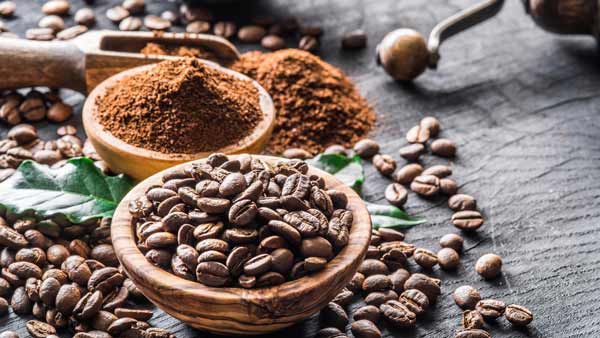Decaf coffee: the production process
Hello and welcome back, the topic of the day is always our beloved espresso, specifically, we will see how it is obtained by excluding caffeine. Even if we get a little technical (but without exaggerating), at the end of the article everything will be clearer.
Decaffeinated coffee is a product that has an extraordinary success all over the world. The reasons are many and can be summarized in the following properties:
- the qualities of rightness and aroma
- the tonic effect of the drink.
The taste and aroma of coffee are the result of roasting; during this operation, profound transformations occur in the composition of the product: the moisture content is greatly reduced and several hundreds of soluble and volatile, highly aromatic substances are formed, which give rise to the characteristic taste and aroma of the drink. The toning effect is linked both to its pleasantness and the temperature of the espresso, and to the presence of caffeine.

Coffee and its effects on the body
The effects of this component on the organism are multiple and range from improving reaction times to stimuli (improvement of reflexes), to improving attention, to an influence on the quality of sleep which can also be significant.
While in most cases the request for a coffee corresponds to the desire to sip a good, hot and pleasant drink, the physiological stimuli linked to the intake of caffeine are not always desired or requested by the consumer.
Birth of decaffeinated coffee
These are the reasons why, already at the beginning of the 20th century, the decaffeinated coffee industry arose, a product capable of satisfying consumer demands, without the worry of unwanted physiological effects.
Decaffeination technology has become increasingly refined over the years, until we reached a product that. from the point of view of the organoleptic characteristics, it holds up excellently in comparison with non-decaffeinated coffee.
The techniques used to decaffeinate coffee are different; However, all of them involve the following processing phases:
- treatment of raw coffee (not yet roasted) with a technological adjuvant suitable for extracting caffeine:
- treatment of decaffeinated coffee with steam. to completely eliminate the technological adjuvant;
- final drying of the coffee to bring it back to its original level of humidity
Verwerkaf technology
The Verwerkarf Company has been present on the market for years as a coffee producer, and is at the forefront as a decaffeination company for the volume of coffee treated. The technology used for the decaffeination of coffee involves the use of “ethyl acetate”, a technological adjuvant whose characteristics ensure a very selective extraction of caffeine: this means that almost exclusively caffeine is extracted from the raw coffee treated with ethyl acetate , thus keeping practically unchanged all those substances present in the bean which, with roasting; they give rise to the characteristic taste and aroma of coffee
The result is a product of absolutely excellent quality, whose organoleptic characteristics can be considered entirely equal to those of untreated coffee. The best examples on the market in Italy are the decaffeinated blend of Borbone, the Decaffeinato by Essse Caffè, and recently also the decaffeinated blend by Saida Caffè.
The technological process is such that the residues of processing aid in the healthy raw decaffeinated product are less than 50 mg/kg, an extremely low value. especially if we consider that the specific Decree of the Minister of Health did not deem it necessary to set a real limit value for the technological adjuvant “ethyl acetate”. given the substantial harmlessness of this product for health.

Analyses on decaffeinated coffee
From a study carried out by the Experimental Station for Food Preservations of Parma, it can be seen that on a sample of natural green coffee, the presence of Ethyl Acetate is higher than the corresponding decaffeinated sample.
The analysis carried out on the same roasted coffee also highlights that during the roasting process, the presence of Ethyl Acetate further develops. The decaffeinated coffee produced is also considered “dewaxed” and therefore lacks both the stimulant and anti-digestive action of waxes.
This technological adjuvant whose quality, in terms of purity, is previously agreed with the supplier and is certified by complete analyzes carried out on each batch of product: it is therefore an absolutely safe product.
Furthermore, the technological adjuvant used is already present in nature in the green coffee itself.
Roasting and grinding
The subsequent operations of roasting, grinding and packaging of the decaffeinated product take place in a production environment subjected to rigorous control, through the adoption of specific operating procedures and instructions and analytical methods, which guarantee compliance with the pre-established standards.
The hygienic characteristics, in particular, are ensured by the application of the rules indicated both by law 30 April 1962 n°283, and by the self-control system based on the principles of the HACCP system as established by EEC Reg. 852/2004.
Pre-treatment of raw beans with steam provides the necessary permeability to the surface of the beans for the passage of caffeine into the beans.
Decaffeination is carried out at a temperature close to the boiling point of ethyl acetate.
After extraction, the caffeine is separated by distillation and the recovered acetate is used for other decaffeination treatments.
At the third stage the excess of the natural organic substance present in the coffee is expelled with the steam.

Final processing phases and final analyses
At this point the raw coffee. decaffeinated and moist, it is dried to the normal humidity level, with a total weight loss of between 5% and 6%.
The routine analyzes that are performed on each match are:
1) Humidity. with the oven drying of a sample for six hours at 100° C° (DM 05/20/1976 Art.1)
2) The caffeine residue with HPLC method (ISO 10095:1992)
3) The adjuvant residue with headspace gas chromatography method with FID detector (Method approved by the European Decaffeinators Association)
The legal limits are; for humidity 11% (D M. 20/5/1976). for the caffeine residue 0.10% s.s. (Ministerial Decree 20/5/1976) and for ethyl acetate limits according to correct manufacturing practice (DL.4/2/1993).
As we told you at the beginning, we got a little technical, but we hope we have aroused your curiosity as to how the decaffeinated coffee that you like so much is obtained!




Visita il nostro e-shop e scopri tanti prodotti a prezzi vantaggiosi!